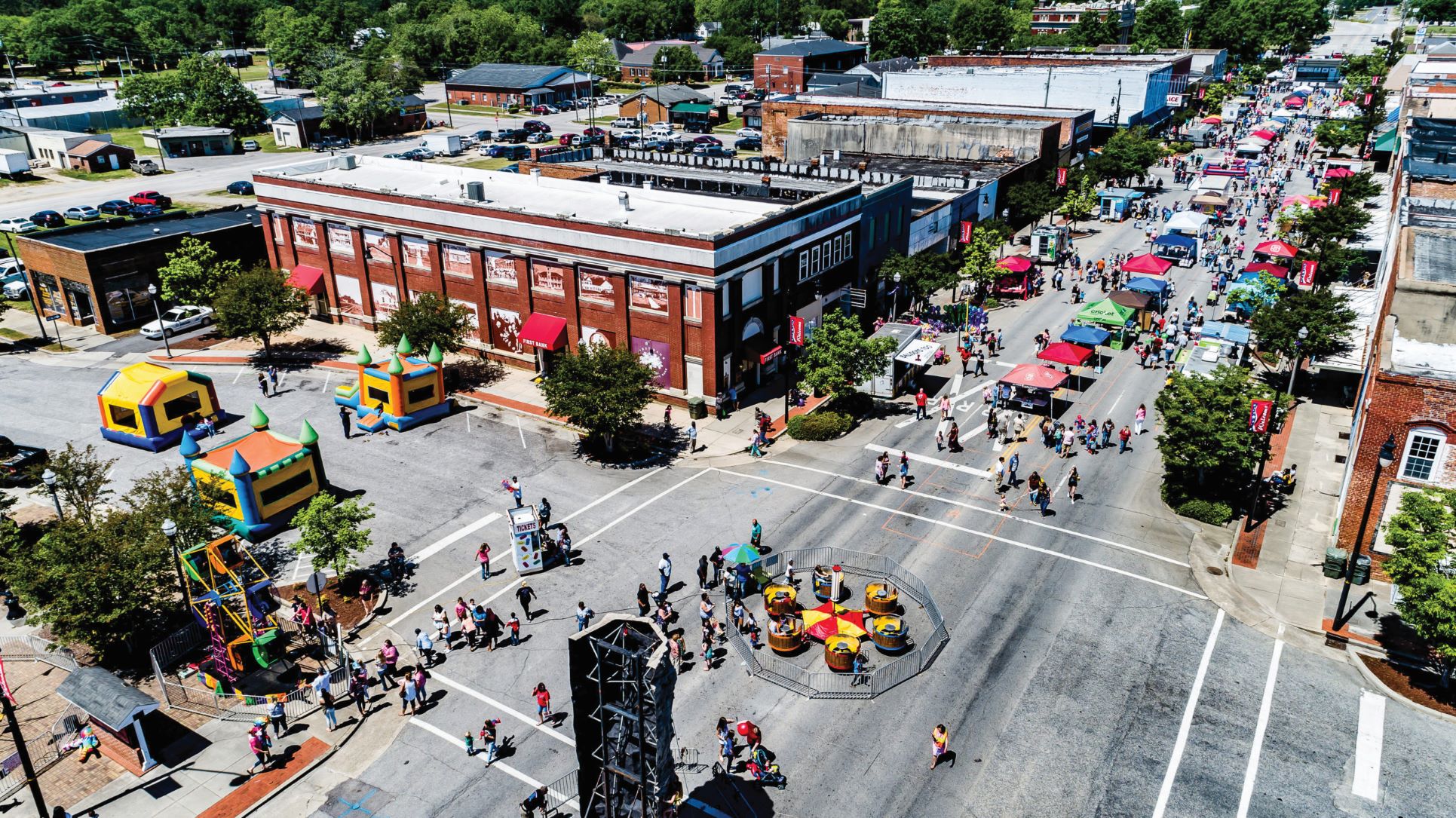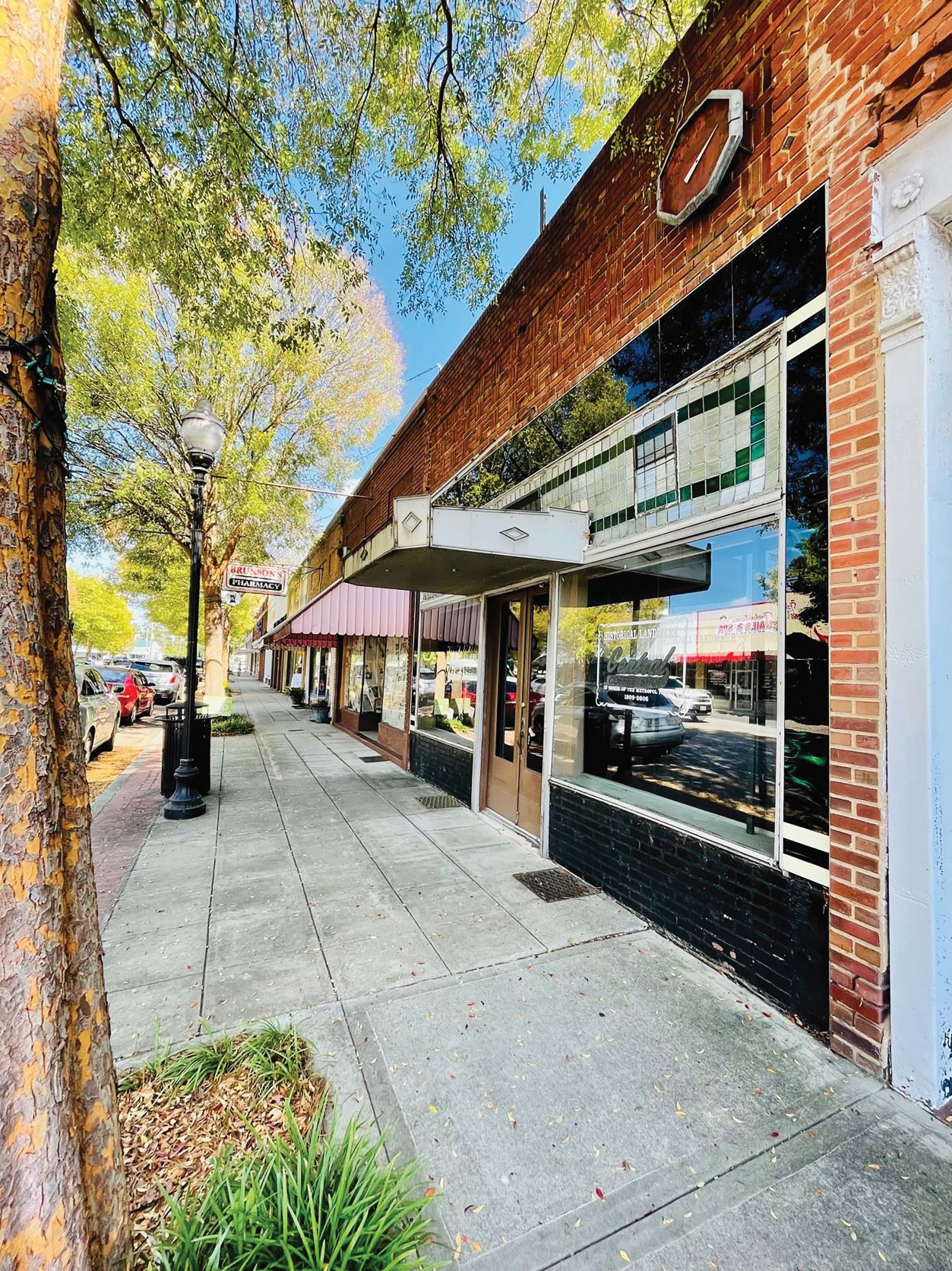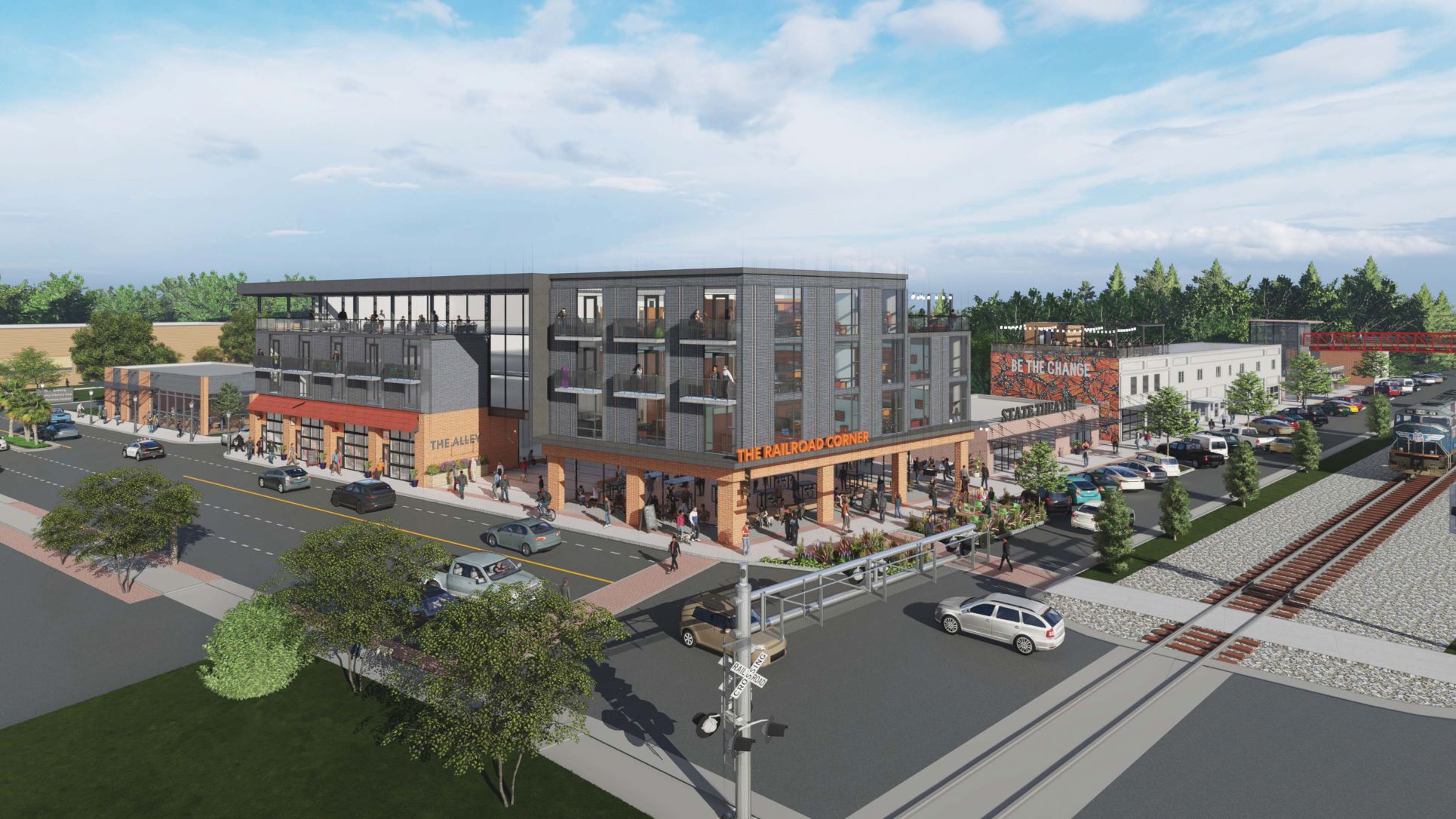Lighting, landscaping, sidewalks and benches — each design element can improve the appearance and function of South Carolina’s downtown public spaces. Effective downtown design, paired with thoughtful historic preservation practices, can help a community stand out among its peers and serve as a potent draw for residents and businesses.
Communities like Dillon, Manning, and Orangeburg have adopted comprehensive revitalization plans that pay careful attention to maintaining a good mix of retail businesses and an inventory of historic buildings. These plans also focus on the partnerships and programming that can catalyze new historic commercial district investments.
Dillon
A county seat in the Pee Dee region, Dillon is known for its transportation modes. From early railroad development to today’s Amtrak station and inland port, Dillon serves as a major transit hub along Interstate 95.

Dillon’s Celebrate Main Street Festival features concerts, cook-offs, street dances
and a car show. Photo: City of Dillon
Like many rural communities across the state, the City of Dillon invested heavily in downtown streetscaping to spur additional economic activity.
“Twenty years ago, we set aside significant funding to revitalize downtown’s infrastructure,” said Dillon’s Mayor Pro Tem Phil Wallace. “We thought that other investments would follow.”
However, disinvestment in Dillon’s downtown continued.
“After leaving for Arizona and California, I would come back to visit,” said Lisa Moody, Dillon’s downtown development coordinator. “Every time I walked downtown, I noticed there were two more stores gone. Then the larger businesses had moved … Eventually, we just stopped coming downtown altogether.”

Manning has focused on building its balance of retail and dining in the downtown.
Photo: City of Manning.
The City of Dillon recently committed to supporting a Main Street program to refocus downtown initiatives. After receiving a Municipal Association of SC Hometown Economic Development Grant to solidify a downtown master plan, the city pursued several projects including a new police station, a visitor center, a conference area and space for a farmers market and performing arts stage. The city is also actively working to remove barriers for housing developments.
“We have the right jobs in Dillon,” said Mayor Pro Tem Wallace, “but housing is limited.”
Dillon has plenty of untapped potential. Its downtown historic district encompasses more than 60 commercial buildings, all full of redevelopment possibilities. To uncork the commercial district’s potential, the City of Dillon — in partnership with the nonprofit Dillon Community Alliance — is tackling stabilization and preservation initiatives to restore the historic storefronts. Plans include completing a downtown building inventory and establishing a formal process for evaluating buildings that are not meeting Dillon’s maintenance standards. The groups are also planning a preservation-focused campaign to highlight the history of the buildings.
“Once we have multiple rentable, usable spaces, downtown is going to explode,” said Stephanie Mitchell, president of the Dillon Community Alliance. “There’s a real commitment to move the revitalization process forward. It is daunting, but there’s a lot of energy. There’s money to be made in downtown Dillon.”
Manning
Like Dillon, Manning’s proximity to I-95 brings industry and tourism to the region. Revolutionary War history, abundant shorelines on Lake Marion and a position on the SC Coastal BBQ Trail make Manning unique.
Manning’s growth has occurred both within the downtown district and along the I-95 gateway. While national retailers are locating along the interstate — Chick-fil-A is on the way — 11 new businesses have opened downtown. This mix creates a healthy balance of retail and dining, while maintaining Manning’s authentic historic courthouse square.
“There’s a renewed grassroots momentum downtown. Business owners are working together to host retail events,” said Main Street Manning Director Carrie Trebil.
Manning has also created a business-friendly environment where businesses are expanding. One of Manning’s newest food trucks is transitioning to a brick-and-mortar restaurant that will offer brunch all day. Also, a long-established Manning business is in the process of expanding into larger square footage.
A significant investment downtown includes Provalus, an IT company bringing 45 jobs, with as many as 300 more jobs expected. Preferring small cities and historic commercial districts, Provalus invested in a 100-year-old, 14,000 square foot building that was on the verge of collapse.
For communities and leaders working on a similar revitalization journey, Trebil offers this advice: “Trust the process. Fourteen years ago I didn’t envision a large company investing in our downtown. And here we are — with more investments on the way.”
Orangeburg
Home to Edisto Gardens, two historically Black universities and more than 25 notable historic buildings and historic districts, Orangeburg is on the rise.
“Orangeburg is a powder keg of potential. It is a place to grow and prosper,” said City Administrator Sidney Evering. “We have leadership across the city and county working in one accord to revitalize downtown.”
Recognizing pent-up demand for new amenities, the city is making several improvements, including maintenance updates to Edisto Gardens. Nearby, it plans to add a skatepark, pickleball courts and a playground. It’s also stabilizing several historic buildings to make them more attractive and useful. Noting the Newberry Opera House’s impact on downtown Newberry, Evering is looking to rehabilitate Orangeburg’s underutilized Stevenson Auditorium, a 600-seat theater.

This rendering illustrates the potential of the Railroad Corner redevelopment,
which would transform a space between Orangeburg’s downtown and SC State
University and Claflin University with housing and retail. Photo: Perkins & Will.
Railroad Corner may become the city’s most transformative project. This proposed mixed-use site would include student housing and retail space, and would be a $20 to $25 million investment.
To encourage private investment alongside these public investments, the city has increased its facade grant program significantly — from $50,000 to $250,000. Simpler activities also help reestablish confidence in downtown.
Applying fresh mulch, power washing the sidewalks, and leaving up holiday lights all year “signifies pride in Orangeburg,” said Evering. “We stepped up our code enforcement to address dilapidated buildings and weedy lots. We didn’t want developers and prospects seeing rundown buildings and dirty streets.”
The city partners with its nonprofit Main Street program, the Downtown Orangeburg Revitalization Association, to coordinate and program after-hours activities downtown. Many activities now use the new Downtown Market Pavilion, a 6,200 square-foot open-air facility, funded in part by a Hometown Economic Development Grant. Built to fill a vacant lot and give a permanent home for the farmers market, the pavilion also hosts events like Spring Fest and Orangeburg’s Street Dance.
“The process to raise the funds for the pavilion was a statement to investors — that our community wants downtown to be the best it possibly can be,” said Candice Roberson, executive director of DORA. “With donations from large industries, small businesses, residents, the state and local governments, the pavilion has become an asset not just for downtown, but the larger Orangeburg community as well.”
Maximizing investments
Evidence of previous investments can be seen across South Carolina’s downtowns in underground lighting, landscaping and sidewalk improvements.
Even so, “the notion of ‘build it and they will come’ is not enough. Design is just one aspect of a healthy downtown,” said Jenny Boulware, manager of Main Street South Carolina. “Implementing an annual action plan that addresses partners, vacancies and marketing maximizes public infrastructure investments.”
Main Street South Carolina is a technical assistance program of the Municipal Association of SC. It offers several community membership levels ranging in cost and requirements.
